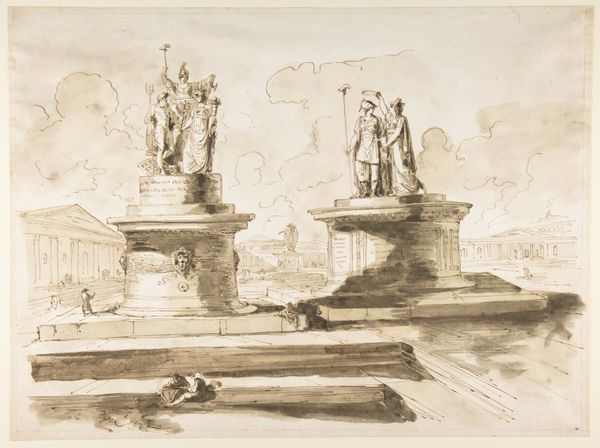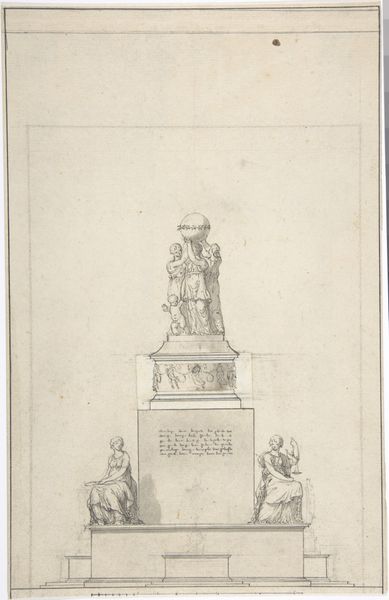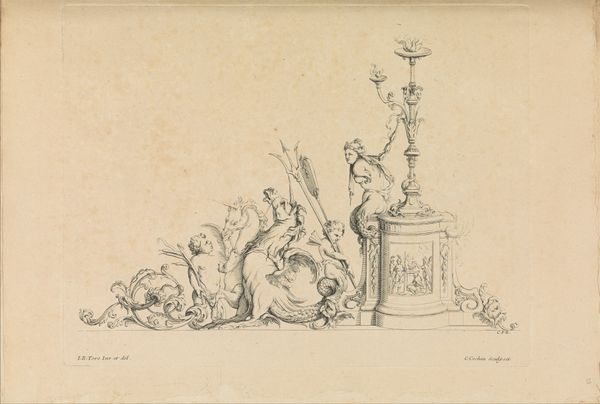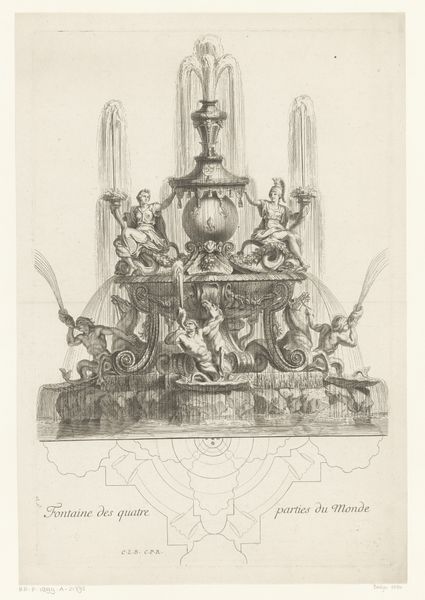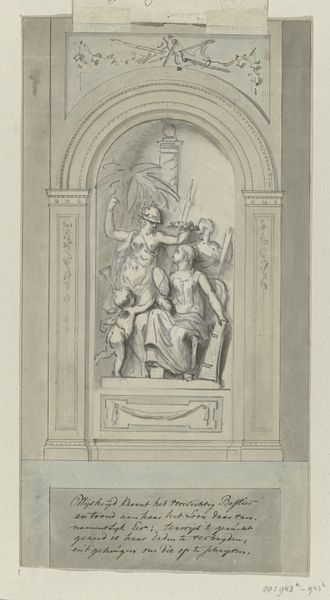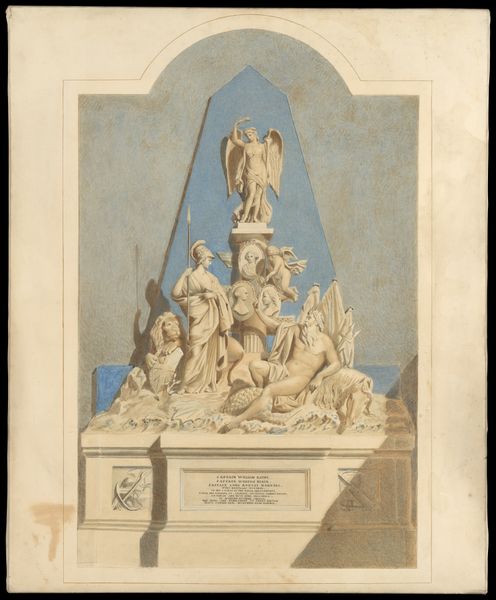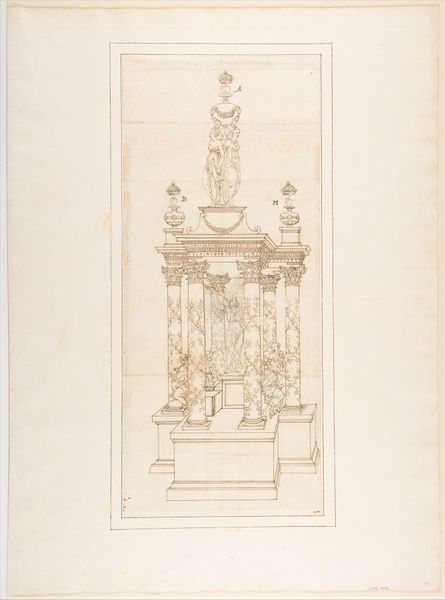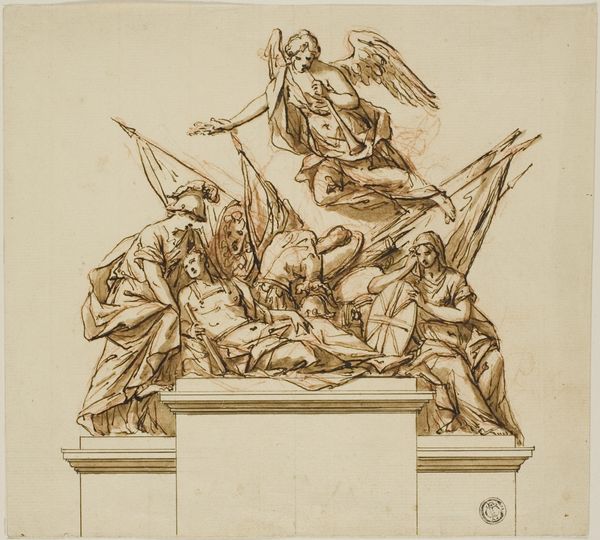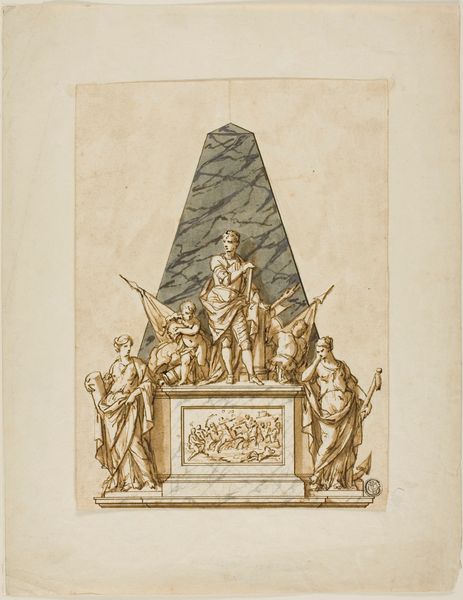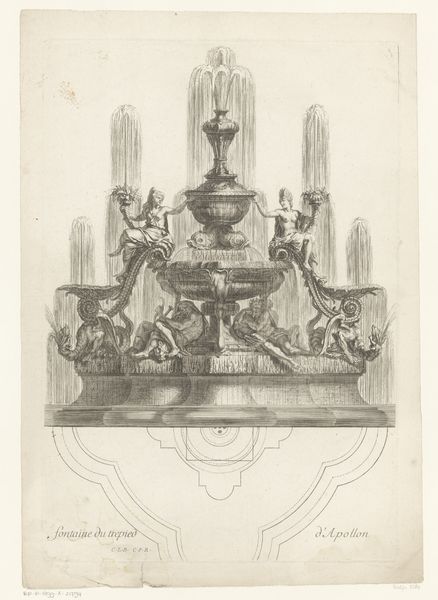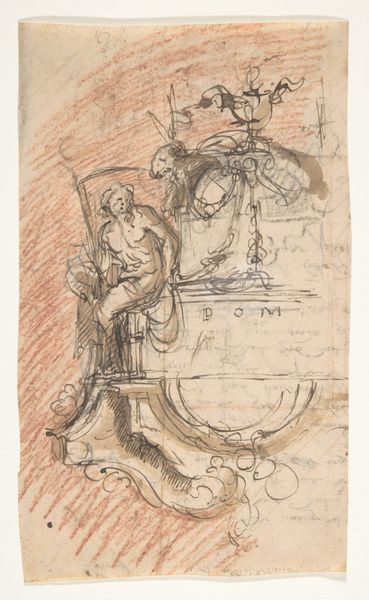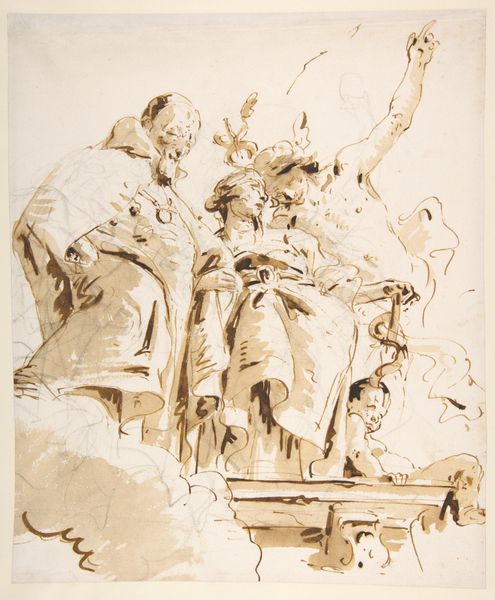
Bernini's Fountain of the Four Rivers in Piazza Navona, Rome 1700 - 1800
0:00
0:00
drawing, print, watercolor, ink, sculpture
#
drawing
#
baroque
# print
#
landscape
#
figuration
#
watercolor
#
ink
#
sculpture
#
cityscape
Dimensions: sheet: 7 11/16 x 6 7/8 in. (19.6 x 17.5 cm)
Copyright: Public Domain
Curator: Here we have a drawing, likely from the 18th century, depicting Bernini's Fountain of the Four Rivers in Piazza Navona, Rome. It combines ink and watercolor to capture this iconic sculptural group. Editor: My initial reaction is one of contained dynamism. Despite being a drawing, there's a real sense of the fountain's intended power, though filtered through a more contemplative lens. Curator: Absolutely. The choice of medium – ink and watercolor on paper – is significant. This wasn't meant to be the final artwork, but rather a study, perhaps a preparatory sketch or a record of the existing fountain. The paper itself would have been relatively inexpensive and easy to transport. Editor: I’m drawn to the figures themselves – representations of the rivers Nile, Ganges, Danube, and Plate. Each is rendered with such distinct characteristics and implied symbolism. They embody not just geographical locations but entire cosmologies. Notice how the Ganges seems to be associated with a calmer presence versus the dramatic gesturing of the Nile. Curator: Yes, Bernini often employed assistants in his workshop for executing such monumental projects. Understanding the labor involved gives insight into how the final design emerges. What details were refined at what stage and how many hands were effectively responsible for the finished piece. It’s intriguing how much collaborative art historical research helps to determine levels of craftsmanship and workshop production. Editor: The obelisk is a really compelling element here, it grounds the whole work with its long history stretching back to ancient Egypt. In a way, this fountain acts as a cultural crossroads of imagery spanning vast time periods. The rock base reminds me of natural forces and how architecture and nature become intertwined to create monuments, imbuing landscape with deeper narrative meaning. Curator: And beyond the iconographic symbolism, this drawing also raises questions about its social function and the economy. Who commissioned it? For what purpose? What was the relationship of the patron to the art-making process? These are all important aspects of analysis to better appreciate the context. Editor: The symbolic rivers and the obelisk do offer pathways into so many intersecting cultural dialogues. Understanding the power associated with this fountain can lead us to recognize deeper universal messages about transformation and knowledge embedded within art. Curator: Precisely. Investigating this piece opens avenues to study material economies, workshop practices, and Baroque social stratifications of creative labor. Editor: Yes, and from my perspective, these symbols create a ripple effect connecting visual imagery with the complex currents of belief throughout history.
Comments
No comments
Be the first to comment and join the conversation on the ultimate creative platform.

